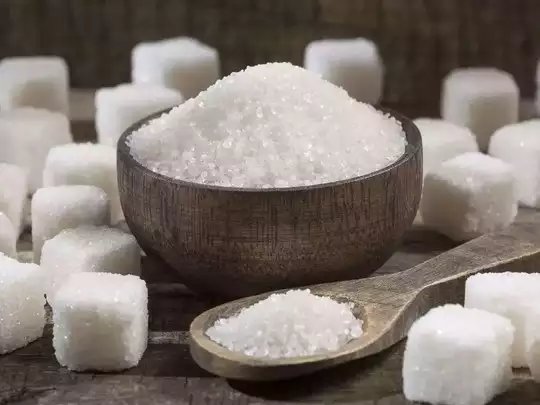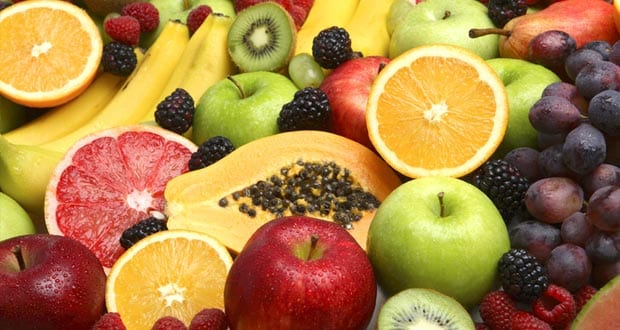Added sugars are linked to kidney stones, and should probably be added to the list of risk factors. That’s according to a first-of-its-kind new study published in Frontiers in Nutrition.
The new research is based on a systematic analysis of self-reported data from 28,303 adults on kidney stone history and daily added sugar intake collected from 2007 to 2018 within the US National Health and Nutrition Examination Survey (NHANES).
The results suggest that limiting added sugar intake may help to prevent the formation of kidney stones.
The connection between added sugars and kidney stones
After adjusting for risk and lifestyle factors, the data demonstrated that the participants who derived more than 25% of their total energy intake from added sugars had 88% greater odds of developing kidney stones than those who derived less than 5% of their total energy from added sugars.
The overall mean intake of added sugars for participants in the study was around 270 total calories from added sugars, or 13.2% of total daily calories.
Lifestyle and risk factors considered in the study include:
gender
age
race or ethnicity
body Mass Index (BMI)
smoking status
history of diabetes
Researchers report some demographics, including, “Native American or Asian people had higher odds of developing kidney stones when exposed to greater-than-average amounts of added sugars than Mexican American, other Hispanic, non-Hispanic White, and non-Hispanic Black people,” the researchers stated in a press release.
People with a greater Poverty-Income Ratio (PIR; ie, the ratio between their income and the federal poverty level) also demonstrated greater odds of developing kidney stones.
How eating added sugars may contribute to developing kidney stones
“A diet high in added sugars can increase the levels of certain substances in the urine, such as oxalate and calcium, which are key components of kidney stones. When these substances become concentrated in the urine, they can crystallize and form stones in the kidneys or urinary tract,” says Kara Burnstine, MSRD, LDN, CDCES, a dietician and diabetes educator at Pritikin Longevity Center.
Amy Bragagnini, MS, RD, CSO, an oncology nutrition specialist at Mercer Health Lacks Cancer Center in Michigan and a spokesperson for the Academy of Nutrition and Dietetics who previously worked at Yale New Haven Health Urology/Nephrology Kidney Stone Clinic adds that eating too much sugar can also create urine that is very acidic and an acidic urine is a favorable environment for uric acid stone formation.
How to reduce the amount of added sugar in your diet
Check nutrition labels
Experts say to check your nutrition labels for total grams of added sugars.
“Pay attention to the ingredient list and look for added sugars in products, trying to avoid sugar within the first 3 to 5 ingredients,” says Burnstine. “Be aware of the various names for added sugars, such as sucrose, high fructose corn syrup, dextrose, and maltose,” she adds.
Once you know how much you’re consuming, you can compare it with the American Heart Association’s (AHA) guidelinesTrusted Source.
Add whole food snacks
Both experts also recommend focusing on whole foods as snacks to reduce exposure to added sugars.
“Increasing intake of naturally-sweet foods like fruit can not only help reduce overall added sugar intake but also infuse your body with disease fighting antioxidants,” says Bragagnini.
Burnstine echoes this saying that these whole, unprocessed foods like fruits, but also vegetables, lean proteins, and whole grains will generally contain natural sugars and are healthier alternatives to processed foods that often have added sugars.
“Fruit, cinnamon, and vanilla paste or extract are great ways to naturally sweeten food,” she says.
Limit sugary beverages
Burnstine also recommends cutting back on sugary drinks like soda, fruit juices, and sweetened teas.
“Instead, choose water, unsweetened herbal tea, or infused water for hydration,” she says. “If you like juices, try diluting them with water to decrease the concentration of sugar.”
One way to start the shift is Bragagnini’s method of drinking a tall glass of water first when craving something sweet (like juice) and seeing if the craving passes.
“If the craving doesn’t pass, try taking a small portion of something sweet and really take time tasting and savoring it,” she says.
Be mindful of condiments and sauces
“Many condiments and sauces, such as ketchup, barbecue sauce, and salad dressings, can contain hidden added sugars,” Burnstine tells Healthline. “Look for low-sugar or sugar-free alternatives or make your own at home.”
“Preparing meals at home allows you to have control over the ingredients and the amount of added sugar in your dishes,” she adds.
“Experiment with using natural sweeteners like honey, dates, or maple syrup in moderation,” Burnstine says.
Experts discuss other ways of reducing kidney stone risk
In addition to increasing your water intake and lowering your sodium intake as explained below, Burnstine also suggests:
lowering the risk of obesity (which is a risk factor for kidney stones) by maintaining a healthy weight by increasing physical activity
getting the recommended daily servings of calcium to help prevent kidney stones
Watch your water
Water is essential for more than helping to curb a sugar craving. Bragagnini tells Healthline many patients she assesses have several diet and lifestyle factors contributing to kidney stone formation, and a major reason many of them develop kidney stones comes down to not drinking enough water.
“Hydration is a key component to keeping kidney stones at bay because it helps dilute urine and prevents the concentration of substances that can form stones,” explains Burnstine.
To prevent kidney stones, Bragagnini says the recommendation is to aim for consuming 3 liters of fluid a day (depending on your age and body size).
How to get into the habit of drinking more water
Bragagnini says she encourages her patients to make drinking water part of a healthy “habit” they can introduce and make routine.
“For example, given that most of us brush our teeth in the morning, keep a glass in the bathroom and automatically drink a full glass of water before brushing your teeth,” she says.
“Keeping a water bottle by your side the whole day can hopefully increase the chance of you sipping consistently,” says Bragagnini.
Burnstine adds that if keeping a water bottle handy wherever you go and if drinking water is a challenge to remember, try using a water reminder app to start establishing a hydration habit.
Lower your sodium (added salt) intake
“High-sodium diets lead to calcium being taken from your bones and concentrating in the urine,” she says. “Calcium in the urine has a high chance of binding with other compounds to form stones,” explains Bragagnini.
So another way to reduce kidney stone formation is to lower your sodium intake. The AHA sodium guidelinesTrusted Source recommend no more than 2,300 mg a day, but ideally no more than 1,500.
How to reduce total salt intake
“You can reduce your sodium intake by first taking the salt shaker off the table,” says Bragagnini. Then, she recommends assessing how much salt you’re currently consuming.
“Checking the sodium content on food labels and keeping the milligrams of sodium close to the calories per serving is a good way to check if the food is high or low in sodium,” adds Burnstine.
“Try to find products that are lower in sodium and remember, most pre-packaged foods/snack foods/processed meats have a high amount of sodium,” Bragagnini tells Healthline.
Lastly, Bragagnini says to remember that sugar (and salt) is an acquired taste, and it may take some time to have taste buds adjust to different flavors. Burnstine offers a solution of gradually decreasing the amount of sugar you add to your coffee, tea, or cereal.
“Over time, your taste buds will adjust, and you may find that you need less sugar to satisfy your cravings,” she says.




